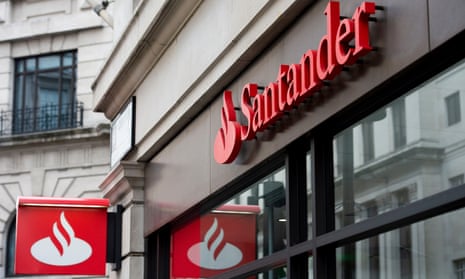The boss of Santander UK says the bank is putting aside more money for potential defaults linked to the cost of living crisis after seeing a pickup in customers falling behind on mortgage and loan payments.
Mike Regnier told the Guardian that he was keeping a close eye on the “strain and pressure” facing customers as a result of the cost of living crisis, which has made it harder for some households to keep up with rising food and energy bills and financial commitments such as home loans.
That strain has been compounded by rising interest rates and economic uncertainty, which has resulted in higher monthly payments for borrowers coming off of fixed-rate mortgages.
Santander, the UK’s fourth-biggest mortgage lender, will increase its standard variable rate by 0.25 percentage points to 6.24% from the start of November, and its two-year fixed-rate mortgages now command an interest rate of 6.04%.
“We’ve seen a very slight increase, but not yet a significant increase, in the number of customers who are falling behind on mortgage payments or … payments on cards, or loans or overdrafts,” Regnier said.
Santander has started contacting vulnerable customers, referring them to advisers, or having its own trained staff on standby. Its provisions could offset increases in its net interest margin, which is a key measure of profitability and accounts for the difference between what is charged for loans and paid out for deposits.
Santander UK has about 11% of the mortgage market, a book of £184bn of home loans as of July. It put aside £66m for potential defaults in the second quarter, up from £52m in the first three months of the year.
“Over the last two quarters, we have seen a small uptick in our net interest margin but we’ve also seen an uptick in the level of provisions that we’re taking against what we expect we’ll be seeing in terms of future losses,” Regnier said.
While banks such as Santander UK increased provisions for potential defaults during the Covid crisis, most were eventually reversed when pandemic restrictions were eased. With inflation running at almost 10%, lenders are once again having to increase provisions in response to the weaker economic outlook.
“The Covid provisions that we had, we’ve removed, and we’ve replaced those now with provisions that relate to the high inflation environment that we’re now facing,” Regnier said.
That is despite having stress-tested borrowers’ finances, meaning banks will have checked that customers could afford repayments even if interest rates soared. However, banks such as Santander would have typically tested against rates of about 6-7%, a level that has now almost been reached. Last week, the average two-year fixed mortgage rate rose above 6% for the first time since 2008.
“There are lots of customers who … will be paying significantly more than they were doing previously, and that will come as a shock. And some people will find that very difficult. We’ll be there to support them as well,” he said.
after newsletter promotion
It comes as NatWest announced it was spending £2m to ramp up the number of dedicated debt advisers available to its business customers, as small and medium-sized businesses also struggle with soaring costs.
The lender’s partnership with the debt charity StepChange will last two years and give customers access to independent advice, and could result in referrals to other specialists including tax accountants. It is the latest support measure to be rolled out for business customers hit by rising energy costs, even amid government subsidies.
Regnier’s comments were made as Santander UK released data on Tuesday showing homebuyers were willing to pay a premium for energy-efficient homes. He said the energy crisis had shifted priorities, even compared with the Covid pandemic, when borrowers hunted for larger homes with gardens after nationwide lockdowns.
Its data showed that homebuyers were paying 9.4% more, or an average of £26,600, on homes that had been retrofitted with green features including better insulation, double-paned windows or energy-efficient boilers.
“I would have thought that that would have shifted even more since we did this survey in May because with the cost of energy going up, the importance of people understanding the energy efficiency of the place that they’re planning to buy would be even more front of mind,” the Santander boss said.
